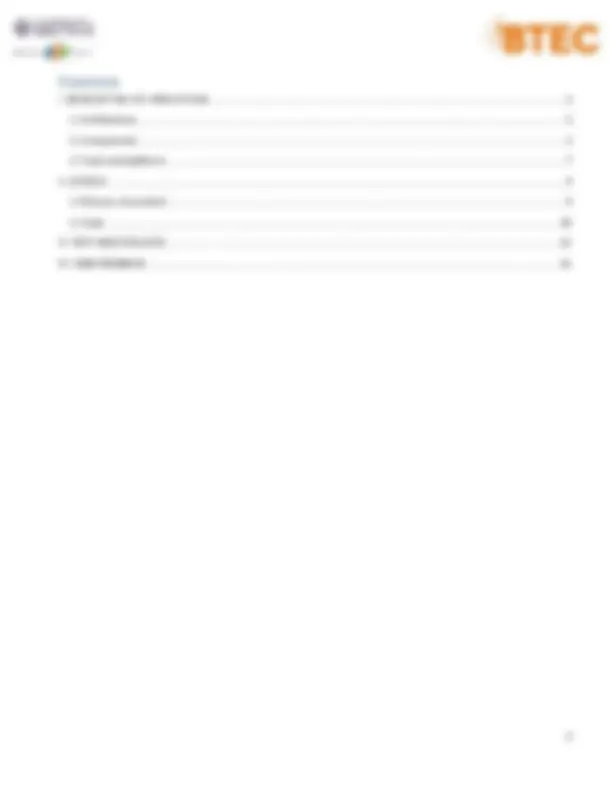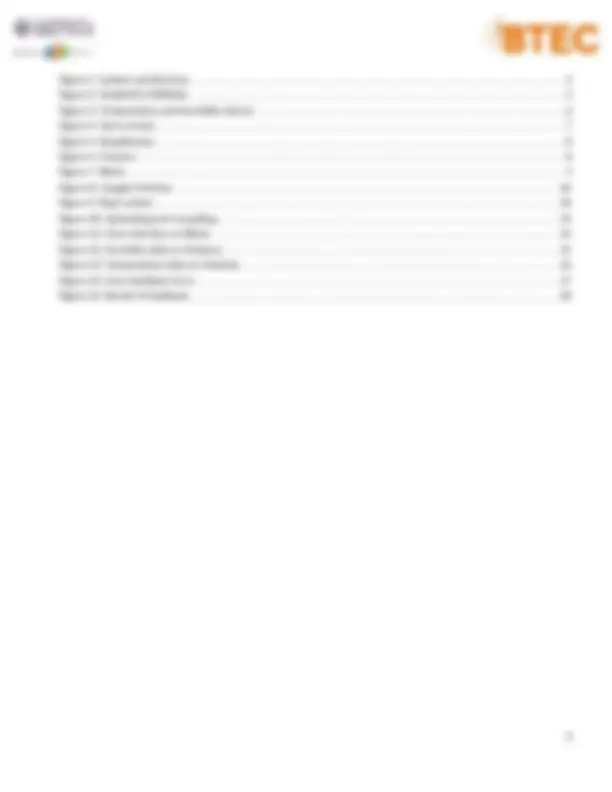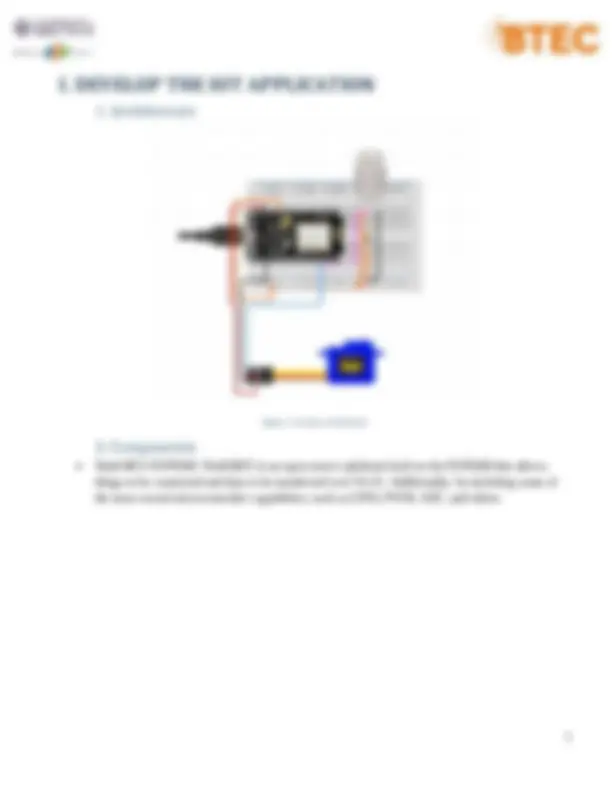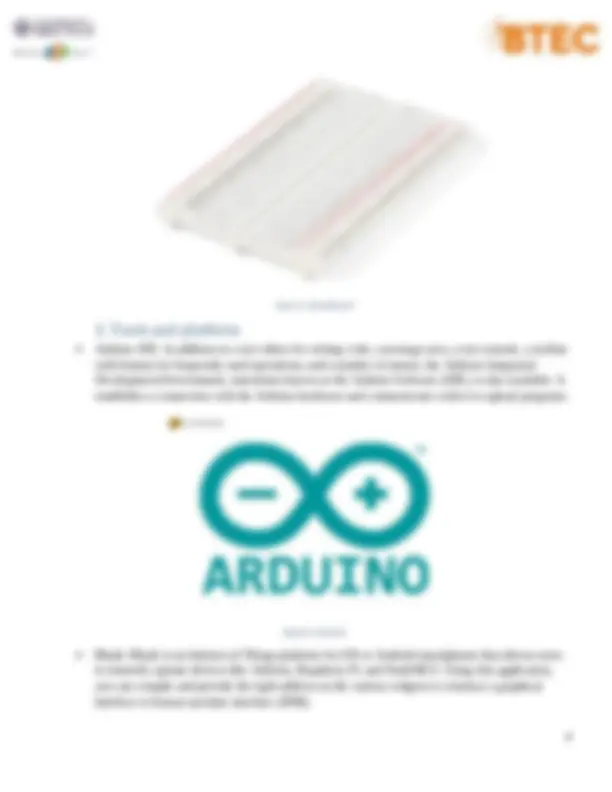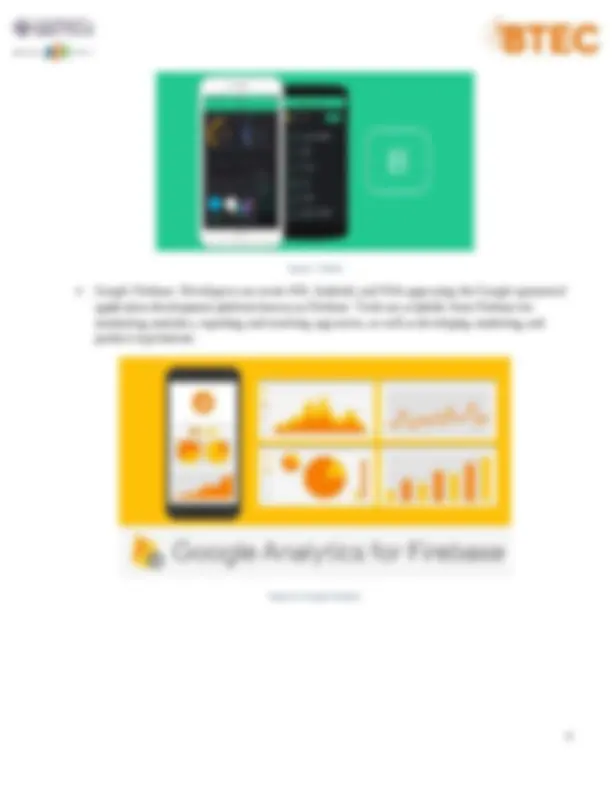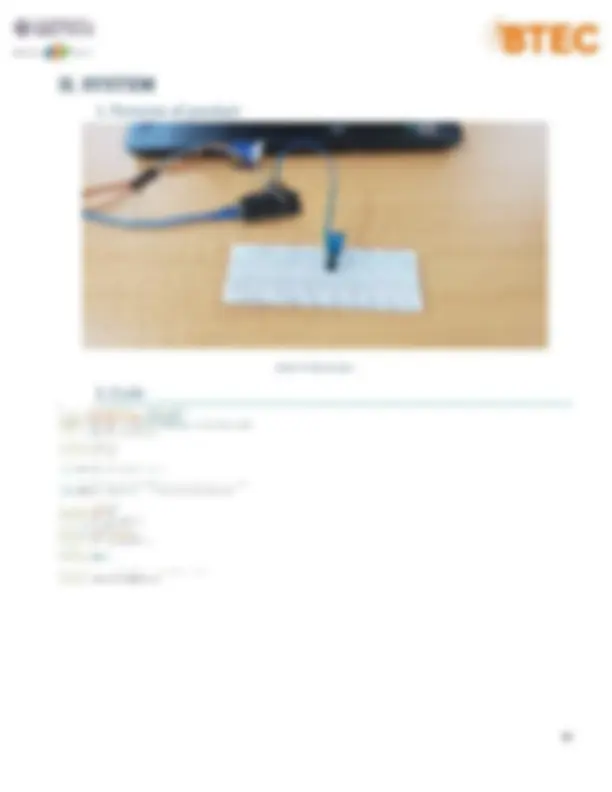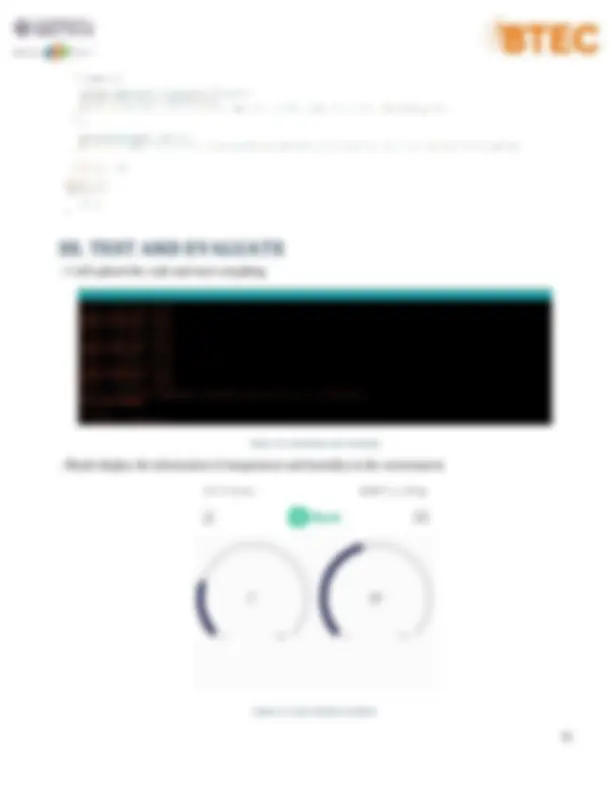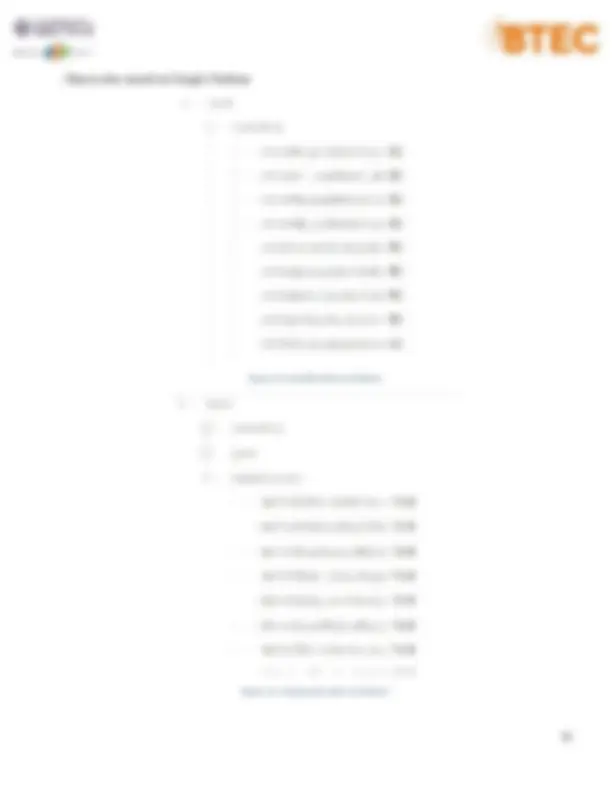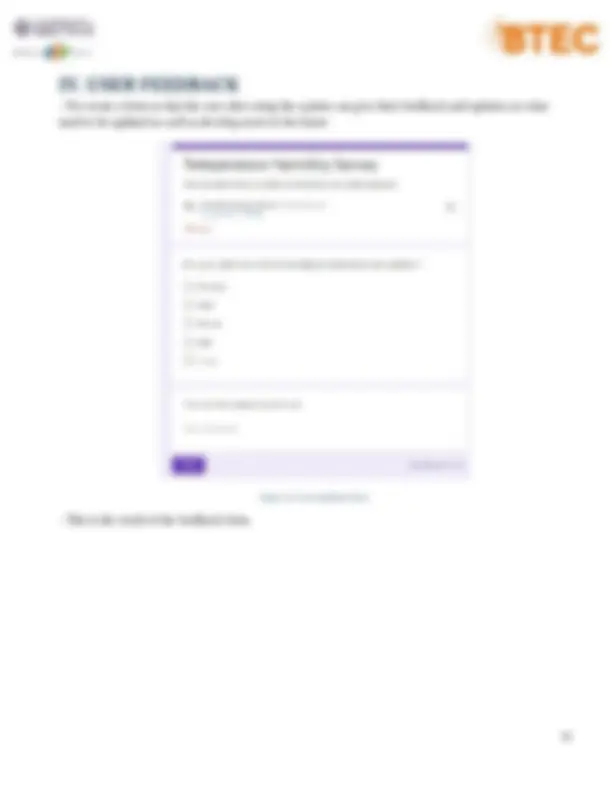Download 1690_Internet of Things_Assignment 2 and more Assignments Internet and Information Access in PDF only on Docsity!
ASSIGNMENT 1 FRONT SHEET
Qualification TEC Level 5 HND Diploma in Computing Unit number and title Unit 43: Internet of Things Submission date 09/06/2002 Date Received 1st submission Re-submission Date Date Received 2nd submission Student Name Mai Tran Tuan Anh Student ID GCD Class GCD0904 Assessor name Phan Thanh Tra Student declaration I certify that the assignment submission is entirely my own work and I fully understand the consequences of plagiarism. I understand that making a false declaration is a form of malpractice. Student’s signature Grading grid
P5 P6 P7 M5 M6 D3 D
Summative Feedback: Resubmission Feedback:
Grade: Assessor Signature: Date: Internal Verifier’s Comments: Signature & Date:
- I. DEVELOP THE IOT APPLICATION...............................................................................................................................
- Architecture.........................................................................................................................................................
- Components........................................................................................................................................................
- Tools and platform...............................................................................................................................................
- II. SYSTEM....................................................................................................................................................................
- Pictures of product..............................................................................................................................................
- Code...................................................................................................................................................................
- III. TEST AND EVALUATE............................................................................................................................................
- IV. USER FEEDBACK....................................................................................................................................................
- Figure 1: System architecture......................................................................................................................................
- Figure 2: NodeMCU ESP8266.......................................................................................................................................
- Figure 3: Temperature and Humidity Sensor...............................................................................................................
- Figure 4: Servo motor..................................................................................................................................................
- Figure 5: Breadboard...................................................................................................................................................
- Figure 6: Arduino.........................................................................................................................................................
- Figure 7: Blynk.............................................................................................................................................................
- Figure 8: Google Firebase..........................................................................................................................................
- Figure 9: Real system.................................................................................................................................................
- Figure 10: Uploading and compiling..........................................................................................................................
- Figure 11: User interface on Blynk.............................................................................................................................
- Figure 12: Humidity data on firebase........................................................................................................................
- Figure 13: Temparature data on firebase..................................................................................................................
- Figure 14: User feedback form..................................................................................................................................
- Figure 15: Result of feedback....................................................................................................................................
I. DEVELOP THE IOT APPLICATION
1. Architecture
Figure 1 : System architecture
2. Components
NodeMCU ESP8266: NodeMCU is an open-source platform built on the ESP8266 that allows things to be connected and data to be transferred over Wi-Fi. Additionally, by including some of the most crucial microcontroller capabilities, such as GPIO, PWM, ADC, and others
Servo Motor: A small machine with an output shaft is called a servo motor. Sending the servo a coded signal allows for precise angular positioning of this shaft. The servo will keep the shaft in its current angular position so long as the coded signal is present on the input line. The angular location of the shaft varies if the coded signal changes. In real life, radio-controlled airplanes employ servos to position control surfaces like the elevators and rudders. Additionally, they are utilized in robotics, puppets, and radio-controlled autos. Figure 4 : Servo motor Breadboard: A breadboard is made of a plastic block that is home to a grid of electrical sockets with dimensions appropriate for retaining component wires, thin connecting wire, or the pins of transistors and integrated circuits (ICs). Inside the board, the sockets are connected in rows of five sockets.
Figure 5 : Breadboard
- Tools and platform Arduino IDE: In addition to a text editor for writing code, a message area, a text console, a toolbar with buttons for frequently used operations, and a number of menus, the Arduino Integrated Development Environment, sometimes known as the Arduino Software (IDE), is also available. It establishes a connection with the Arduino hardware and communicates with it to upload programs. Figure 6 : Arduino Blynk: Blynk is an Internet-of-Things platform for iOS or Android smartphones that allows users to remotely operate devices like Arduino, Raspberry Pi, and NodeMCU. Using this application, you can compile and provide the right address on the various widgets to construct a graphical interface or human machine interface (HMI).
II. SYSTEM
1. Pictures of product
Figure 9 : Real system
2. Code
III. TEST AND EVALUATE
- I will upload the code and start compiling Figure 10 : Uploading and compiling
- Blynk display the information of temperature and humidity in the environment Figure 11 : User interface on Blynk
- Data is also stored on Google Firebase Figure 12 : Humidity data on firebase Figure 13 : Temperature data on firebase
Figure 15 : Result of feedback
- Based on the feedbacks, we can see that our system is pretty well-developed. As the opinions given from the customer, in the future, we will add the measuring UV features into the system to that it can satisfy the user requirements

